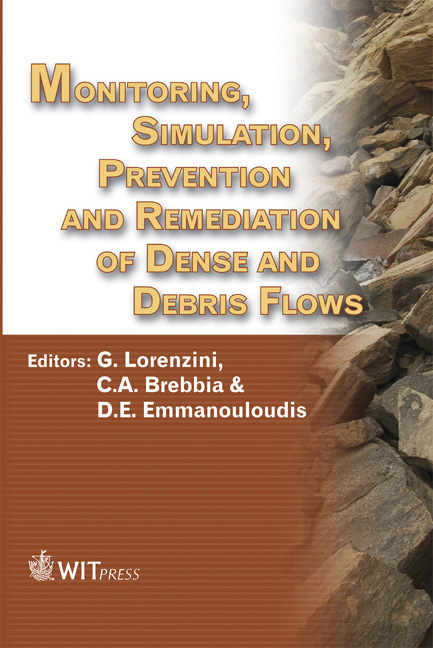Back Analysis Of The Vaiont Slide Using A Multi-block Sliding Model
Price
Free (open access)
Transaction
Volume
90
Pages
9
Published
2006
Size
585 kb
Paper DOI
10.2495/DEB060251
Copyright
WIT Press
Author(s)
C. Stamatopoulos & S. Aneroussis
Abstract
A multi-block sliding system model and associated computer code has been developed to model the displacement of sliding geo-masses. This model is a useful tool, especially when displacements are very large and computer codes based on the Finite Element Method cannot be applied. The paper applies the model to predict the response of the well-documented Vaiont landslide, which occurred on 9 October 1963. The predicted deformation of the slide and back-estimated soil strength agreed reasonably well with the measured. In addition the computed and observed time duration of motion and peak slide velocity are in agreement. Keywords: Vaiont slide, multi-block model, residual soil strength. 1 Introduction The conventional sliding-block model has shortcomings in back-analyzing slides when displacement is large. The reason is that the change on geometry of the sliding mass, that greatly affects the displacement, is not modeled. Ambraseys and Srbulov [1] proposed a two-body sliding system that models the displacement of slides. Stamatopoulos et al. [2] generalized the two-body sliding system. Sarma and Chlimintzas [3] proposed a sliding system consisting of n bodies. Similarly to the Sarma [4] stability analysis method, internal sub-planes are formed at the locations where the external slip surface changes inclination. Energy loss at these sub-planes is adequately modeled. As shear displacement occurs, mass is transferred between consecutive blocks. This model is a useful tool, especially when displacements are very large and computer codes based on the Finite Element Method cannot be applied. The purpose of this paper is to investigate the ability of the model to predict the
Keywords
Vaiont slide, multi-block model, residual soil strength.





